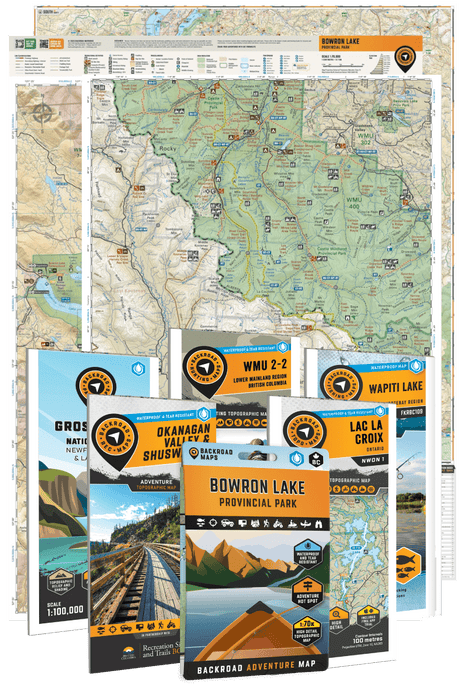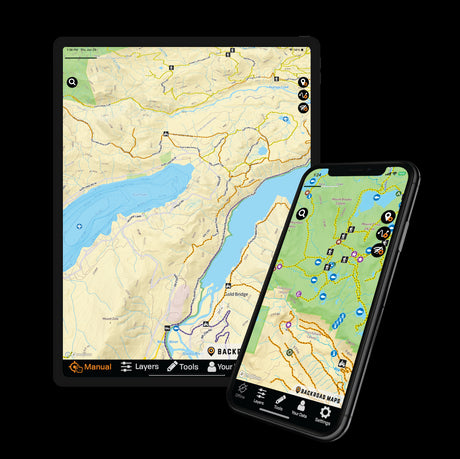For the adventurer, Nova Scotia offers a variety of exciting opportunities. From the highest tides in the world in the Bay of Fundy, several impressive fossil sites, Kejimkujik National Park and the Ovens Sea Caves in the west, Peggys Cove and Halifax to the south and the spectacular scenery of the Cabot Trail in the east, you will need plenty of time to take in all the province offers.
While it is possible to reach Nova Scotia by ferry, either from the State of Maine or from Saint-John in New Brunswick, most enter the province from New Brunswick along the Trans-Canada Highway at Amherst. This is where our trip begins.

Jurassic World & Eroding Sea Stacks
Leaving the Trans-Canada just south of Amherst, Routes 302 and 242 lead to Joggins and the Joggins Fossil Cliffs. There are 15 kilometres (9 miles) of coastal cliffs, home to fossilized trees, reptile remains and trackways to discover. Guided tours are available here.
Continuing west with the scenic Chignecto Bay off to the right, pick up Apple River Road and head into Cape Chignecto Provincial Park. While a four day trek will allow hikers to explore the Coastal Loop Trail, the day-use area at the north end of the park offers shorter hikes to both Squally Point and the Three Sisters Sea Stacks. Plan to arrive at low tide so you can head out onto the ocean floor to get up close to these huge columns.
Turning back east and traveling along the Minas Basin towards Truro, trails at both the Five Islands Provincial Park and Thomas Cove are worth checking out, as is the Economy River Wilderness Area, where a short trail leads to a 186 step staircase to the base of Economy Falls, one of the province’s largest waterfalls. The 6 kilometre Devil’s Bend Trail, also found here, is one of the most challenging in the province but the reward of spectacular scenic lookouts makes it all worth-while.

Cape Split, Dark Sky Preserves and Ocean Caves
Reaching Truro, it is time to zig-zag and head west once again into the Annapolis Valley. But before leaving town, head to Victoria Park and check out the 15 metre (50 ft) Joe Howe Falls. Our next destination is Cape Split Provincial Park Reserve north of Kentville, or the Blomidon Provincial Park which offers camping and a great basecamp for the trek out to Cape Split. Considered one of the most breathtaking trails in Nova Scotia, the 13 kilometre (8 mile) round-trip trail leads to the tip of the peninsula in Minas and Scots Bay, with columnar basalt cliffs that rise over 122 metres (400 ft) from the water.
If you have time, continue west to Digby to explore the peninsula that leads south to Brier Island and the Balancing Rock, reached via a 235-step staircase and a boardwalk. However, our next stop is Kejimkujik National Park. While the backcountry offers extended hiking and canoe trips, day-use trails feature a variety of habitats, leading through places of both cultural and natural significance. The park is a Dark Sky Preserve so catching a glimpse of the milky way here is a spectacular site.
From the park, Highway 8 continues south to Liverpool where our trip turns east again. At Lunenburg, a detour south leads to Ovens Natural Park. The park, which is found to the east of Riverport, offers a cliffside trail which leads into sea caves, known as the “ovens”. These caves include Tucker’s Tunnel, Indian Cave and Cannon Cave where a resounding boom is created as the waves enter the cavern. Also, in the area at Kingsburg, is the 4 kilometre crescent Hirtles Beach, likely one of the most magnificent beaches in the country.

Halifax, Peggys Cove and Windswept Coastal Barrens
Back on the road, at Upper Tantallon, Route 333 leads south to Peggys Cove. The lighthouse, which guards the entrance to St. Margarets Bay, sits upon 415 million-year-old rocks surrounded by stunning scenery. Before continuing along Route 333 to Halifax, head south on route 306 to Crystal Crescent Beach Provincial Park, which boasts windswept coastal ocean shores and a boardwalk trail.
Back on Route 303, continue the loop and you will find yourself back in Halifax, the provincial capital. Highlights include the Halifax Citadel, the harbourfront, Pier 21 National Historic Site, McNabs and Lawlor Island Provincial Park, museums and dozens of pubs all within walking distance of each other.

Salmon Pools & Suspension Bridges
Once you have taken in all the sights Halifax has to offer, it is time to head towards Canso. Following the coast, there are several small villages to visit and plenty to see. At Spry Bay, Taylor Head Provincial Park features some great coastal hiking trails while at Liscombe Mills, the Liscombe River Trail is a 9.5 kilometre (5.9 mile) hike that leads up one side of the river, crosses a suspension bridge and returns down the other side. Salmon pools, fish ladders and waterfalls all add to the appeal of this hike.
Ceilidhs, Waterfalls & Down-Home Hospitality
From Canso, it is a short retrace of route before heading through Guysborough and north to the Strait of Canso which leads onto Cape Breton Island. Get ready for some Celtic hospitality! Heading up Route 105 passes Glendale Falls, Myles Doyle Falls and at Baddeck, West Side Road leads north to Uisge Bahn Falls. In fact, it is hard not to throw a stick in any direct on Cape Breton Island and not hit a beautiful waterfall.
Another detour will lead to Louisburg and the Fortress Louisburg, an interesting step back in history in this fully recreated town. Plan to check out the Ruins Walk, a 2.3 kilometre rough trail that leads through the remains of the original 18th century town. Those looking for some additional coastal hiking and historic sightseeing can head to Gabarus. The Gabarus Trail leads to the remains of an abandoned settlement and continues along the rugged coast past Bear Cove and Sugar Loaf Cove.

Stunning Vistas on the Cabot Trail
Returning along the Trans-Canada Highway, it is time to pick up the Cabot Trail. Covering a distance of 300 kilometres, the highway leads around the northern tip of the peninsula and through Cape Breton Highlands National Park, offering stunning landscapes, ocean vistas and quaint fishing villages.
Pro-Tip: Traveling in a counter-clockwise direction always keeps the coast on your side of the highway and makes for easy access to the many pull-offs along the highway.
Our first stop on the Cabot Trail is at Oregon. Head up Oregon Road to the trailhead for the 9 kilometre (5.6 mile) one-way North River Falls Trail. It is a long slog, but the falls are spectacular. If you are up for more hiking, just up the Cabot Trail at Indian Brook is another 5 kilometre trail which leads to Indian Brook Falls.
Continuing north, the road trip heads into Cape Breton Highlands National Park. A great basecamp for exploring the eastern side of the park is Broad Cove Campground at Ingonish. From here, it is a short distance to a number of scenic trails including Cape Smokey, Coastal and Mica Trails, or the 8 kilometre (5 mile) Skyline Trail that visits cliff edges along boardwalk steps that offer stunning views of the coast.
Pro-Tip: Plan to get up early and hike from the campground to Warren Lake, a 5 kilometre loop which offers the chance to spot a moose or black bear along the way!
Our next stop in Cape Breton is Meat Cove. The most northern settlement on the island, this site is reached by picking up Bay St. Lawrence Road at Cape North, heading north, then west on Meat Cove Road. Another pair of great hiking trails sit along this road – the Tenerife Trail and the Sugar Loaf Trail. A former fishing village, Meat Cove sits on a cliff above the bay and offers cabins and tent sites, kayak rentals, a beautiful beach, hiking trails and a great restaurant. In fact, when it came time to choose a cover picture for our freshly released 5th Edition of the Nova Scotia Mapbook, the majority of staff voted for a photo of Meat Cove.
A short drive south leads into Cheticamp and the western boundary of the national park. The Gypsum Mine Trail is a worthwhile detour. Located just outside of town, a 2.5 kilometre trail leads to an old quarry surrounded by tall cliffs, which is also a popular swimming hole. And if you need a place to stay, just down the road is the Accolade Hostel and Retreat Campground, which features rooms in a completely renovated century barn.

Down the West Coast of the Peninsula
The Cape Breton Highlands south of the park are home to a myriad of backroads with the Highland Road forming a north-south backbone through the peninsula, running from near Baddeck to almost the southern boundary of the national park. Overlanders will have a field day exploring off the beaten track and popping in and out along the Cabot Trail to check out the many coastal sites. A highlight is Cape Clear, located to the north of Kingcross. This large outcrop of white stone overlooks the Margaree River and it is a great spot to wild camp for the night.
Continuing south along the Cabot Trail, hang a left onto Highway 396 at South West Margaree and another onto Egypt Road. A short distance down the road is another spectacular waterfall. Retracing your steps and taking a right onto Scottsville Road, just a bit further south on Highway 395, brings you back to the Cabot Trail. You are just a short distance north of the Glenora Distillery, which produces single malt scotch and offers an inn and restaurant. Just south of the distillery is the charming community of Mabou with the well-known Red Shoe Pub that has entertainment every night throughout the summer.

Back on the Mainland Along the Northeast Shore
Crossing back onto the mainland and leaving the island behind, the Trans-Canada Highway leads travelers to Antigonish. Head north from here on Highway 245 for a stop at Arisaig Provincial Park. The rugged coastal cliffs are home to some of the most continuously exposed section of Silurian rock in all of North America. Look for fossils as you explore the hiking trails in the park.
Highway 245 reconnects with the Trans-Canada, leading to New Glasgow where picking up Highway 106 leads north to Pictou. Head to Caribou-Munroes Island Provincial Park and follow the trails along the coast to the end of the sandspit. A ferry takes visitors over to Pictou Island where B&B’s, wooden A-frame tents and yurts offer accommodation while you wander the sandstone bluffs, red soil fields and sandy beaches.
From Pictou, our road trip follows Highway 6, which follows the coast as it leads back to Amherst. Many communities along the way including Tatamagouche and Pugwash offer plenty of maritime charm and spectacular coastal sunsets.
Our road trip is just a small sampling of all that Nova Scotia has to offer. As the province is not very wide, it is easy to drive from the north shore to the south shore in just a couple of hours, opening up even more opportunities to discover great locations. And when you stop for the night, cast a line into any river or lake for a chance to nab a brook trout, affectionally known as speckled trout throughout the Maritimes.

Are you thinking a road trip to Nova Scotia is in your future? Pick up our new Nova Scotia Backroad Mapbook, our GPS maps or log into our BRMB Maps smart phone app & web map to start planning!







